The sugar-free diet has been a hot button topic for years. Making its first appearance in 90s diet culture and having a resurgence recently. But what exactly does it entail? What are the pros and the cons? And is there anything you can do instead of eliminating sugar from your diet? As an intuitive eating dietitian, I answer all your questions around sugar and share a blood sugar balancing strawberries and cream breakfast shake recipe that will remind you why sugars are an important part of your diet.
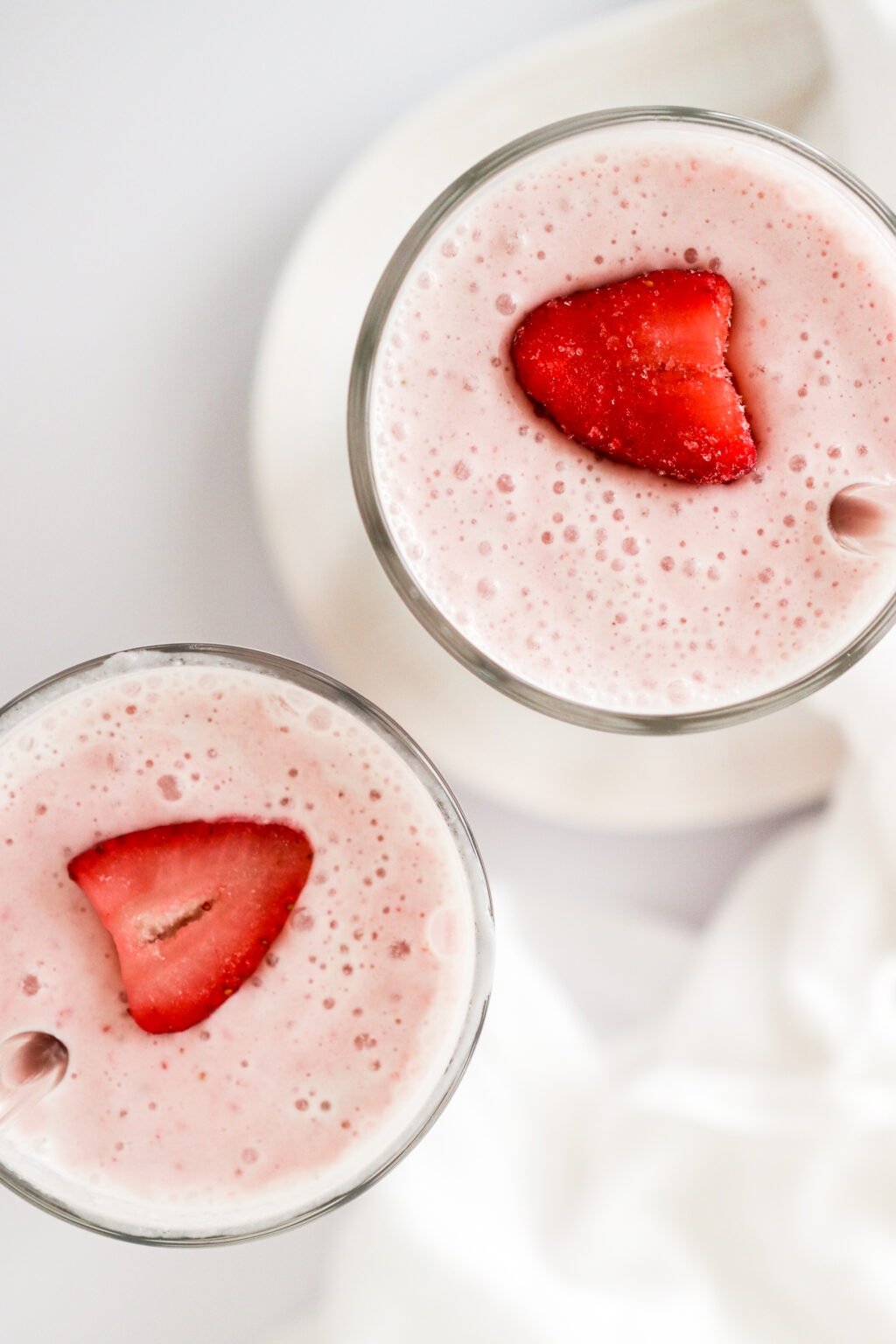
As a Registered Dietitian, clients often ask us about sugars – “Is sugar bad for me?” “Is sugar toxic?” and I don’t blame them! There is so much contradictory information out there. Lately, I’ve been asked a lot about the sugar-free diet and whether it’s worth pursuing. When I look at any restrictive diet from an intuitive eating lens, I’m always considering the short-term vs. long-term effects it can have.
In this blog we’re breaking down the sugar-free diet including:
Plus I’m sharing a bonus recipe – a delicious blood sugar-balancing strawberries and cream breakfast shake! So let’s jump in!
What is the Sugar Free Diet?
The sugar-free diet in some form has been around for decades (!!!). It’s been called atkins, the sugar detox, Whole30 – to name a few. Different diets will have different restrictions around sugar. Some say no fruit, some say no refined sugars, and others will allow fruit but limit carbohydrates. But at the end of the day any diet that restricts or eliminates a type or amount of sugar, we consider a sugar-free diet.
What’s not often talked about…
Sugars do play a role in out diet, in particular in providing us energy. After all sugar is a type of carbohydrate. Carbohydrates (aka carbs) are macronutrients used to fuel our bodies. Out of the three macronutrients (carbs, fat & protein), carbs are broken down the fastest and when broken down, are broken down into sugar – direct fuel for our cells. We need all three macronutrients on our plates so we can keep our blood sugars level, mood stable and bodies nourished throughout the day.
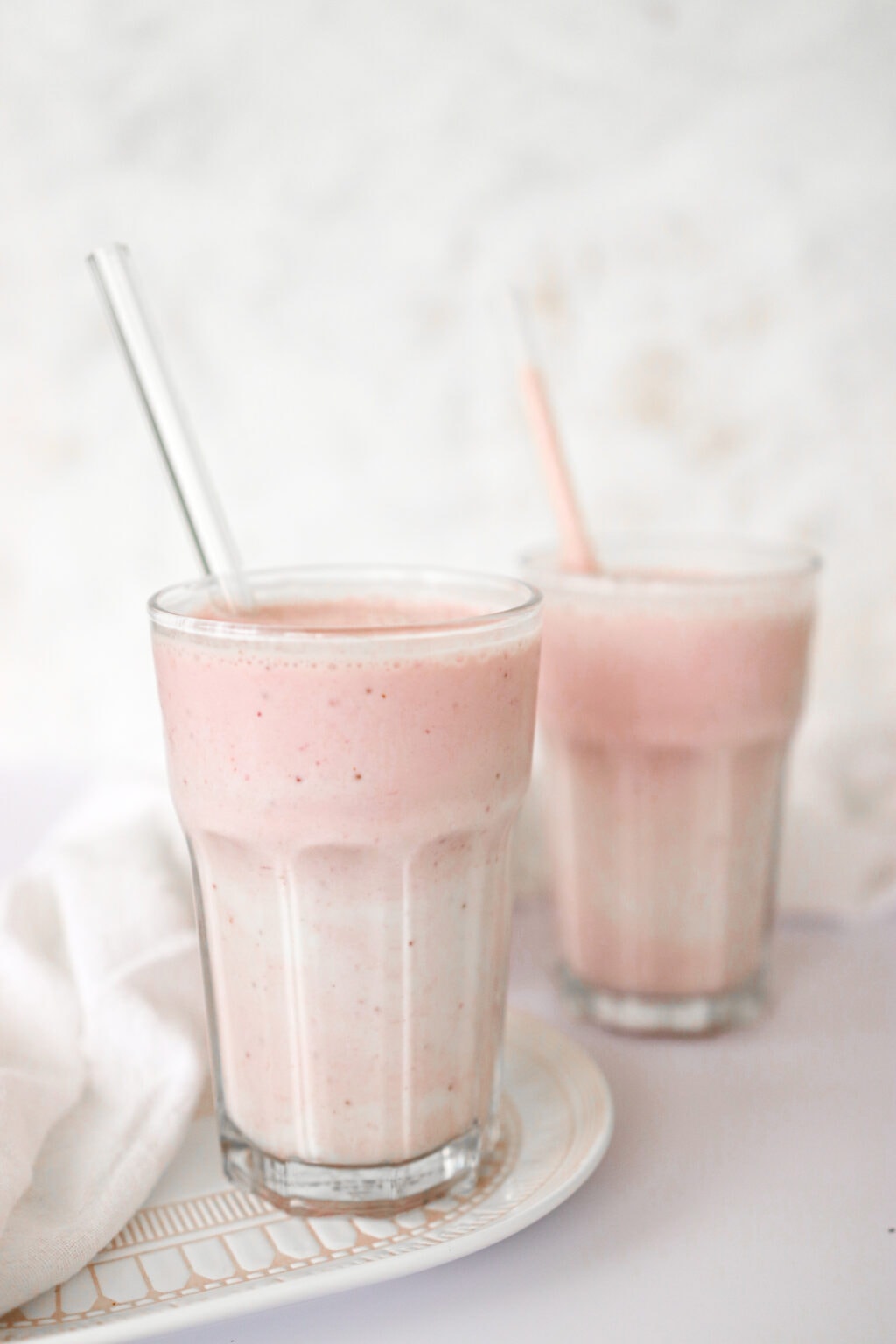
What are the Different Types of Sugars?
There are different types of carbohydrates and sugars and each impact our body a bit differently—let’s discuss!
Natural sugars: Natural sugars are those naturally found in whole foods like milk, fruit or longer chains of sugars found in complex carbohydrates like rice or quinoa. These foods also have the benefit of additional nutrients like vitamins, minerals, fiber and protein which slow the rise of blood sugars and provide longer lasting energy.
Added Sugars: Added sugars are those that are not naturally found in a food, but are added in to give flavor, texture, or sometimes as a preservative.
More on that in this article all about comparing the different types of sugars.
Unrefined Sugars: Unrefined sugars have undergone minimal processing but act similarly in the body as refined sugars and tend to increase blood sugars more quickly. Examples of unrefined sugars include honey, maple syrup or agave syrup.
Refined Sugars: Refined sugars are usually powdered or granulated sugars or syrups that have been processed or broken down into a simple form. Examples include granulated or white sugar, powdered sugar and high fructose corn syrup. Like the unrefined sugars above, these are the type that will increase blood sugars more quickly and are less nutrient dense.
Balancing blood sugars
One tip that can help with balancing blood sugars is to pair protein or fat when consuming more processed or refined sugars. It can also help to enjoy them as part of a snack to get a variety of nutrients and can also help slow the release of sugar into the blood stream.
The Pros of the Sugar Free Diet
There are many claims out there on the positive side of following a sugar free diet. Let’s dive into some of the most popular claims and look at them through an intuitive eating dietitian’s perspective!
Weight loss: Diets tend to be enticing because of the promise of quick and easy weight loss, but we know that 90-95% of diets fail. This means that most individuals who follow a certain diet, will regain any lost weight within 2-5 years of starting the diet and ⅔ of those individuals will regain even more weight than lost in the first place.
Cures sugar addiction: In the short term, it may seem that you are able to stop eating sugar and are cured of your “sugar addiction”. The truth is, you’re not actually addicted to sugar.
The majority of studies done on “food addiction” were actually conducted on subjects that were restricted or deprived from food. When we are deprived of food in general or something specific like sugar, our body’s natural response is to actually crave it more. This can be both a survival response to physical restriction or a psychological response to mental restriction (we want what we can’t have). Learn more about cravings and how to manage them here.
Ready to Transform Your Relationship with Food?
Explore not just what you eat but why you eat, how you feel when you eat and any patterns that affect how you feel or impact any choices you make and start your journey to food freedom today!
The Cons of the Sugar Free Diet
While the proposed benefits of a no-sugar diet may be enticing, it may be harmful to follow this way of eating.
Increased Cravings & Food Obsession: Restricting the type of food you eat can cause us to hyperfixate or obsess over food. The no-sugar diet is a deprivation diet. As humans, we want what we can’t have – it’s psychology 101. When we deprive ourselves of a certain food, we only want it more. This can cause intense cravings, food obsession and can lead to feeling guilty after eating if we “fail” and eat that certain food.
Low Energy & Mood Swings: Sugar is converted by our bodies into energy. Eliminating sugar from your diet can cause dips in your blood sugar levels which can cause fluctuating energy levels and intense mood swings. We want to enjoy balanced meals that include all macronutrients. This will ensure that our blood sugars stay balanced and our bodies feel full for longer.
Increased Risk of Disordered Eating: Deprivation can lead to an overwhelming urge to binge (remember – we want what we can’t have). During intense deprivation, our bodies tend to go into “famine mode” and this often leads to the restrict-binge cycle.
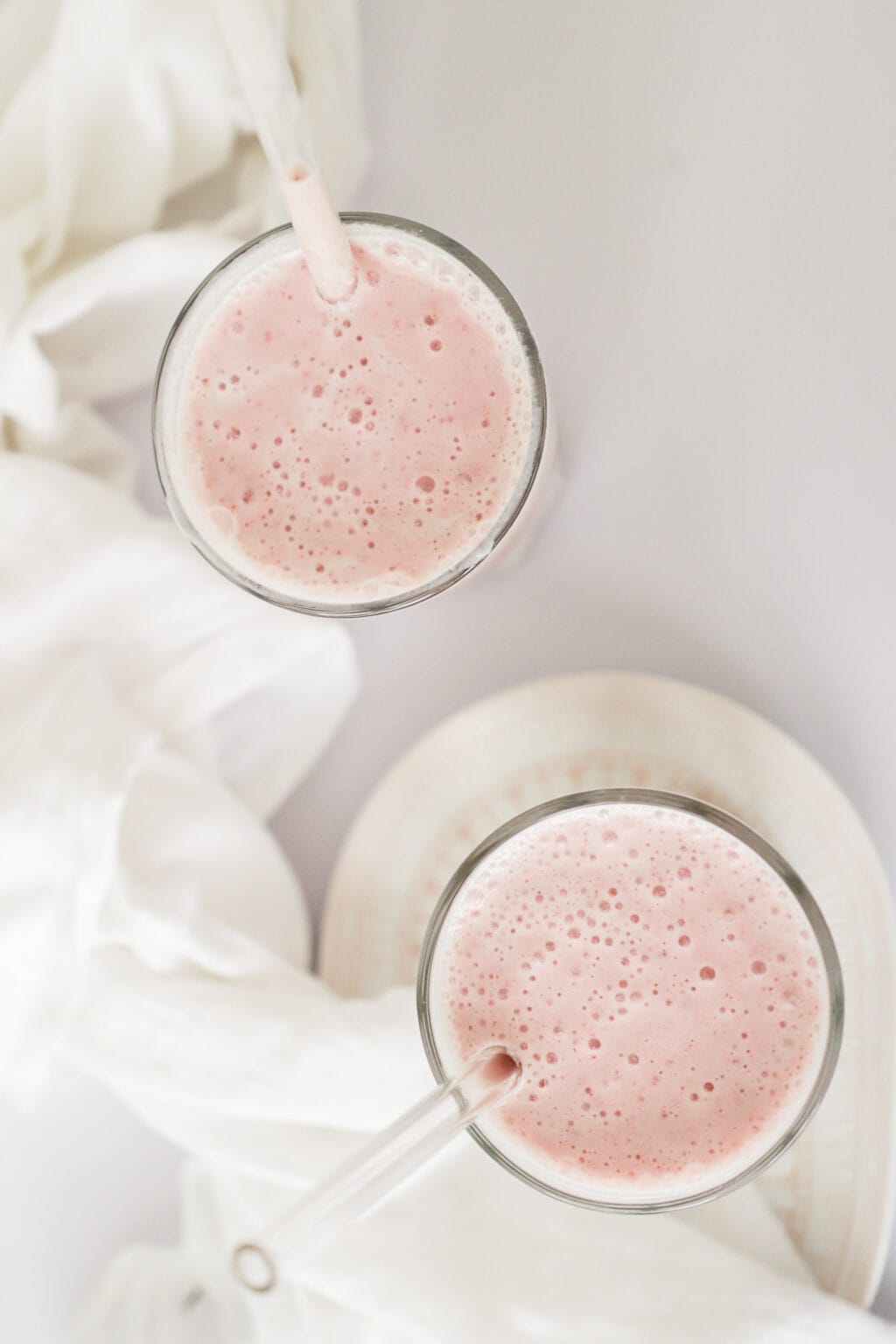
What to Do Instead
Include all macronutrients
We like to teach clients to use the plate method and adopt a positive “more not less” approach. This is a sustainable non-restrictive approach that will keep you feeling nourished throughout the day. Get balanced meal ideas here.
Eat more regularly throughout the day
If we go too long between eating, our body’s physiological response is to send you a signal to eat – we often blame this as a craving. But in reality it’s hunger.
If we don’t honor our hunger, the urge to eat will become stronger and stronger until we take action. This is what often leads to out of control eating, eating past fullness, or an intense urge to binge “forbidden foods”.
Try a Mindful Food Journal
We were born with the ability to know the best way to nourish our bodies but after years of diet culture, learning food rules and deciding that there are “good” and “bad” foods, we lose that inherent knowledge on how to eat in a way that feels good to us. A tool that we use with our clients is a mindful food journal. This is not a food tracker – it’s meant as a tool to explore not just what you eat but why you eat, how you feel when you eat and any patterns that affect how you feel or impact any choices you make. It’s one of the first steps to beginning your journey to food freedom!
Reconnect with your hunger cues
The impact of diet culture can cause us to disconnect with our bodies and not understand when our bodies need fuel or when it’s satisfied. It takes time to stop listening to external diet rules and start listening to what our body is saying. If this is new to you, read all about hunger cues here and how you can reconnect with your body.
Include a variety of foods in your diet
While I believe that all foods fit in a balanced diet there are certainly some foods that are more nutrient dense than others. I encourage clients to eat a variety of foods from all food groups.
As we learn to listen to our internal cues, we can start to honor our body and make intentional decisions. Sometimes that means having a kale caesar salad and other times it’s a delicious piece of ice cream cake (my personal fave).
Ready to Transform Your Relationship with Food?
Explore not just what you eat but why you eat, how you feel when you eat and any patterns that affect how you feel or impact any choices you make and start your journey to food freedom today!
Blood Sugar Balancing Strawberries and Cream Breakfast Shake
This strawberries and cream breakfast shake is delish! Packed with healthy fats, fiber and protein, it’s the perfect way to start your day.
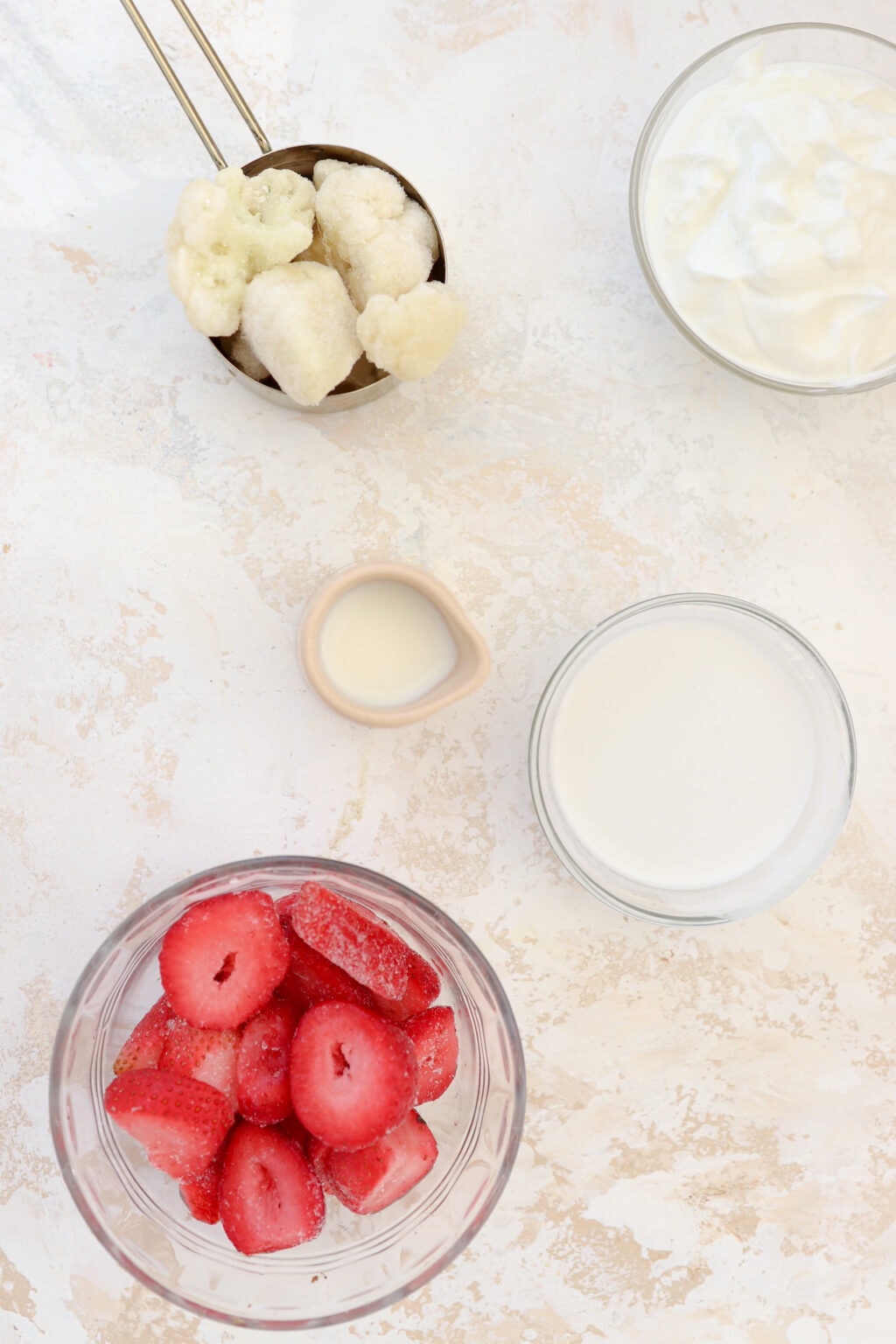
What you need (& substitutions)
Strawberries: I used frozen strawberries (but you can use fresh!). I love the natural sweetness from the strawberries and how they blend. Don’t have strawberries? Try frozen raspberries, blueberries or mango! They will change the taste profile but will all go perfectly with the creaminess of the Greek yogurt & coconut milk.
Cauliflower: The frozen cauliflower adds a creaminess to this recipe. If you don’t have cauliflower on hand, you can substitute for a banana.
Greek Yogurt: I’m a big fan of Greek Yogurt. I used 5% Greek Yogurt but you can use whatever percentage you have in your fridge. I like the creaminess and tanginess the yogurt adds. You can substitute for Greek Vanilla yogurt or any other yogurt you might have.
Milk: I used 2% milk in this recipe. You can substitute for any % milk, nut milk or oat milk. If you wanted to add a little more sweetness, I would try vanilla oat milk!
Full Fat Coconut Milk: This recipe calls for full fat coconut milk. It’s the not-so-secret ingredient that makes this smoothie taste and look like a shake. In a pinch, you can use low-fat coconut milk just note that this will increase the water content of the shake making it less creamy and thick.
How to Make It
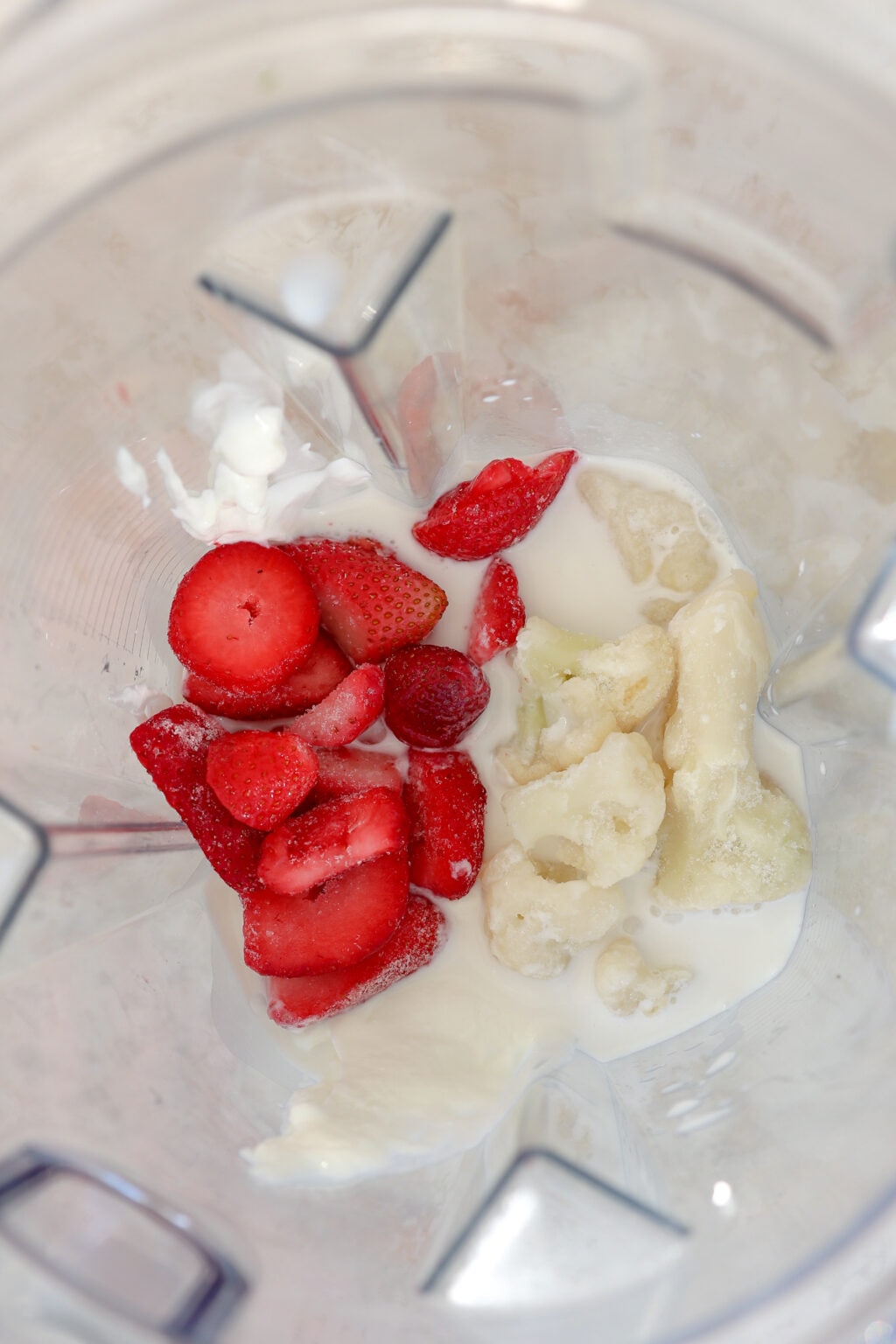
Add all your ingredients except the coconut milk in a high-speed blender and blend until smooth.
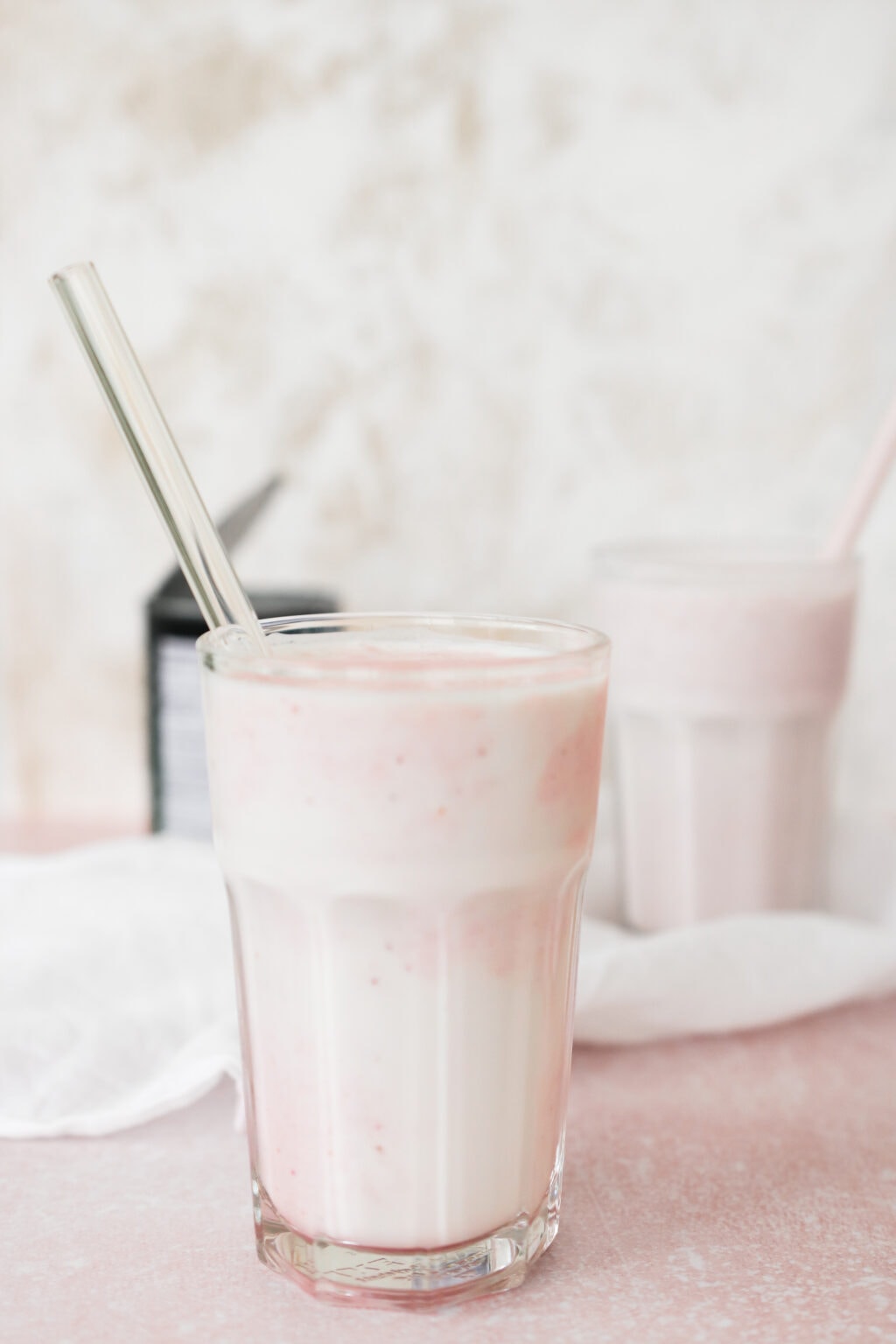
Pour coconut milk into a glass and top with the smoothie blend. Enjoy!
Nutritional Benefits
Strawberries: Packed full of vitamin C, fiber and carbohydrates (aka sugar), strawberries are great for immune function, gut health and energy. They also help regulate our blood sugars and add a natural sweetness to this recipe.
Cauliflower: Cauliflower is full of vitamins and minerals – like vitamin C, Vitamin K and fiber. It’s also a versatile veggie – when frozen, it can add creaminess to a smoothie, when baked it pairs perfectly with seared fish or bbq’d chicken or when mashed it adds even more nutrients to your thanksgiving mashed potatoes.
Greek Yogurt: Greek yogurt is probiotic. It also provides you with Vitamin B12, healthy fats and protein. It’s great for gut health and keeping us feeling full for longer periods of time.
Looking for more support?
Looking for support to end the diet cycle, trust your body and learn the nutrition that feels amazing for YOU? Learn more about my Make Food Feel Good Program here where hundreds of women have found lasting success through my proven framework and step-by-step guided support. Let’s Chat!
Print
Strawberries and Cream Breakfast Shake
- Total Time: 5 minutes
- Yield: 2 1x
Description
This strawberries and cream breakfast shake is packed with healthy fats, fiber and protein. It’s the perfect way to start your day.
Ingredients
- ¾ cup plain or vanilla Greek yogurt
- 1 cup frozen strawberries
- ½–1 cup frozen cauliflower
- ½ cup milk of choice
- ¼ cup full fat coconut milk
Instructions
-
Place the Greek yogurt, strawberries, cauliflower and milk into a high-powered blender and blend on high for 30-60 seconds, until smooth.
-
Pour the coconut milk into a cup and top with the smoothie. Stir with a spoon or straw and enjoy!
- Prep Time: 5
- Category: smoothie
- Method: blend
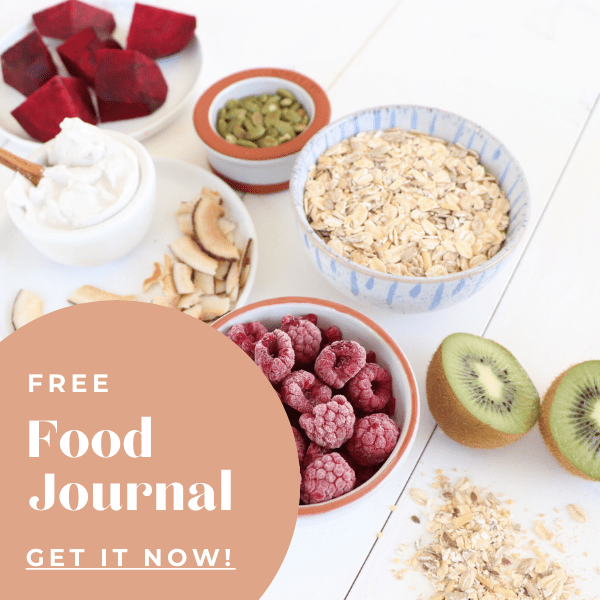
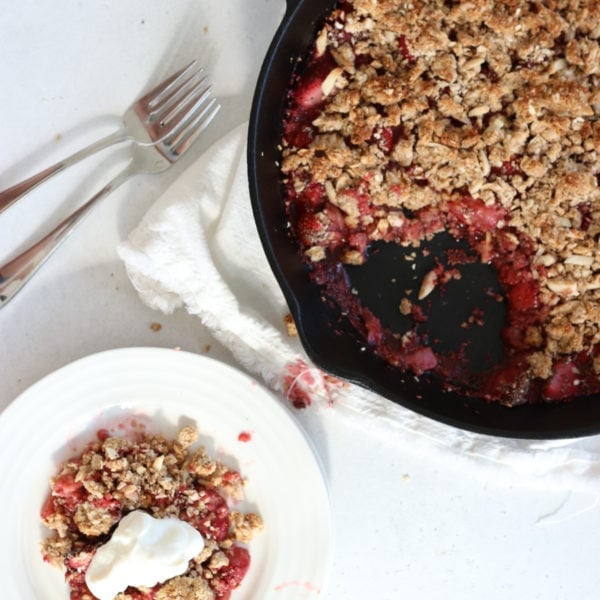
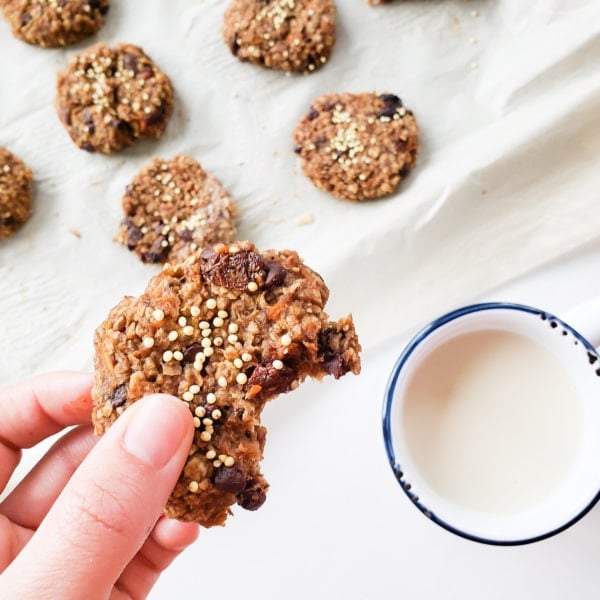


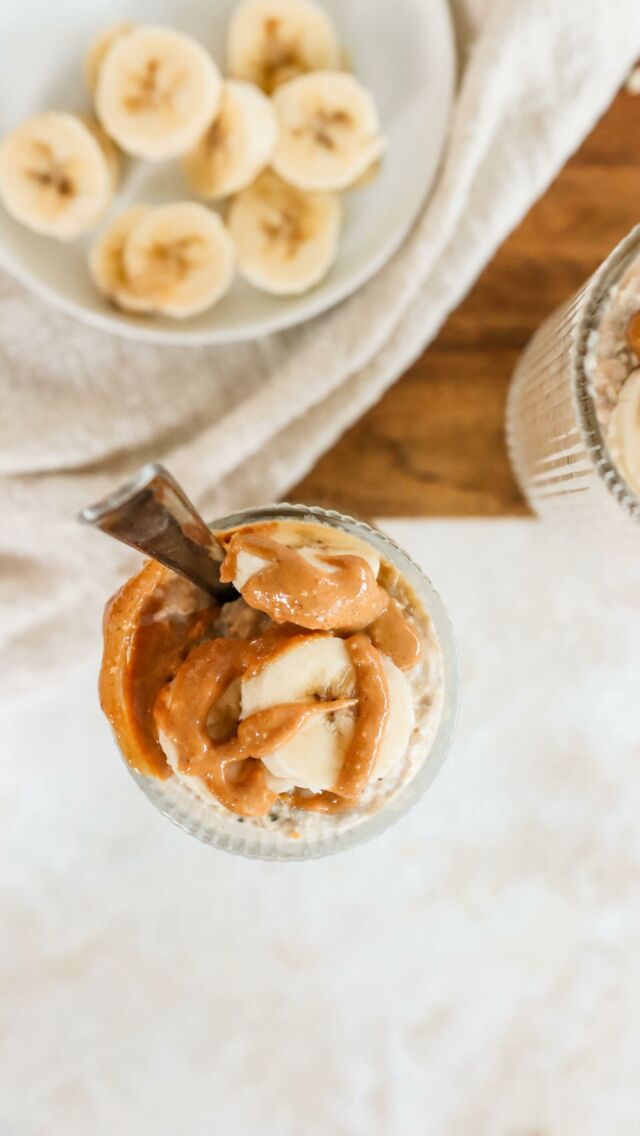


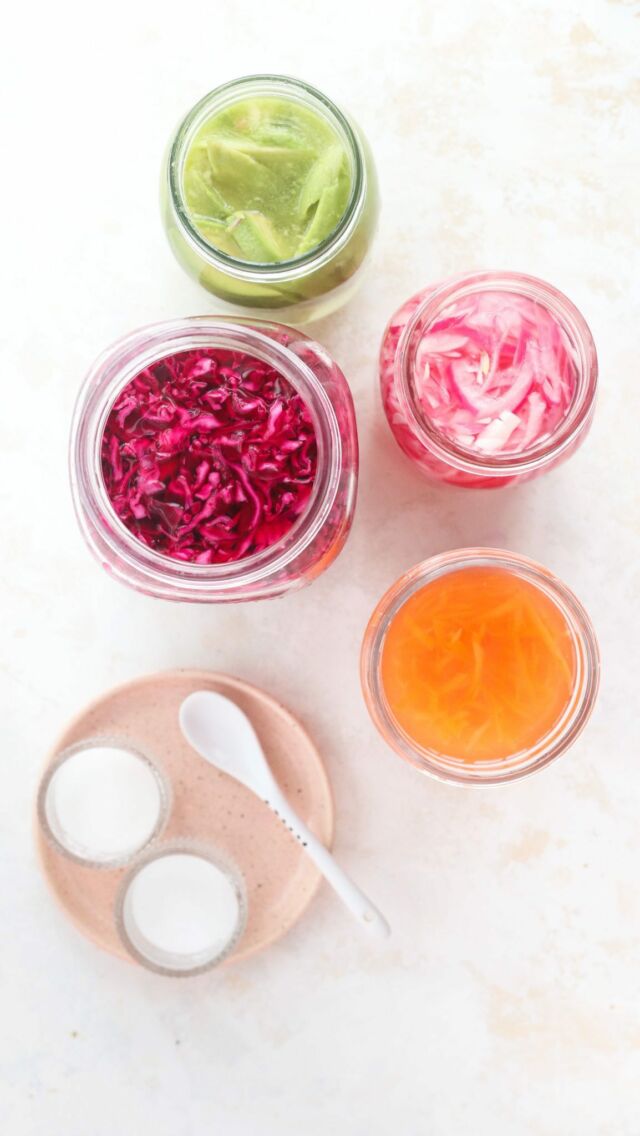
Leave a Comment & Rate this Recipe